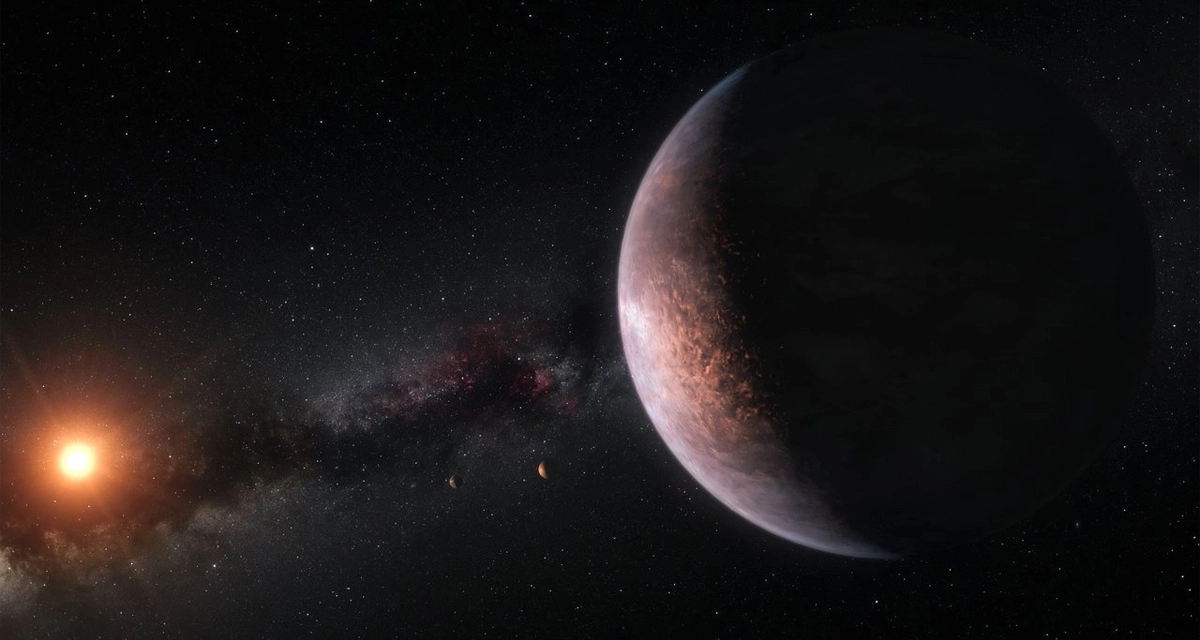In recent years, apart from our own solar system, the most studied solar system is about 39 million light years away from us. NASA scientists have studied the seven exoplanets orbiting Trappist 1 (mother star) with ground and space telescopes such as Spitzer, Kepler Hubble and recently the James Webb Space Telescope.
In February 2018, scientists studied more closely the 7 planets of the Trappist 1 system, and discovered that some of these planets contain water in the form of atmospheric water vapor, liquid water, and on a distant planet in the form of ice. . They also found during these studies that these seven planets can contain more water than the Earth’s oceans. By measuring the density of these planets, scientists identified the Trappist 1 planets as the most Earth-like known planets.
Is Trappist 1 similar to Earth?
A 2021 study showed that the Trappist 1 planets are probably made of Earth-like materials, but these materials are somewhat different from Earth’s constituents. These planets mostly consist of rocks. Most of their ingredients are iron, oxygen, magnesium and silicon. Trappist 1 planets are about 8% less dense than our planet.
New climate models suggest that one of the seven planets orbiting Trappist 1 may have life similar to ours on Earth.
Trappist 1-e is the most similar star discovered to Earth. This star is located at a distance of 39 million light years from Earth. Trappist 1-e is a relatively cool dwarf star that has about 9% of the mass of the Earth’s Sun and about 12% of its radius. Scientists believe that this ultra-cool star hosts at least 7 rocky planets the size of Earth or smaller.
What is 39 million light years in miles and kilometers?
Trappist 1 is about 39 million light years away, which is about 229 trillion miles (369 trillion kilometers). It takes about 39 years to reach the current location of this planet at the speed of light. So far, no spacecraft has been built that can approach anywhere at this speed.
What is the size of the planet Trappist 1-e?
About 84180 km
Is Trappist 1 habitable?
Using terrestrial climate and photochemical models, University of Washington researchers simulated environmental conditions for each planet in the TRAPPIST-1 system. The models show that all seven exoplanets likely evolved like Venus, meaning any water or ocean evaporated early in the system’s formation, the research team said in a statement.
According to these theories and models, the seven planets of Trappist 1 may have a dense and uninhabitable atmosphere. But according to one of these statements, the planet Trappist 1 may host liquid water on its surface, and as a result, it may have life on it similar to that of Earth.
Trappist 1-e is in the habitable zone of its star. The distance of this planet from its star is enough to keep it warm enough to have liquid water on its surface. We know that the earth supports it. According to the researchers, this planet could also have a lot of oxygen in its atmosphere.
According to the statement, as water evaporates from the planet’s surface and is destroyed by the star’s ultraviolet emissions, hydrogen and oxygen molecules are torn apart. Hydrogen is light enough to leave the atmosphere despite the planet’s gravity, but the oxygen atmosphere can also be heavy enough to prevent hydrogen from fully escaping. Therefore, considering these conditions, there is a possibility of oxygen in the atmosphere of Trappist 1.
How long will Trappist 1 survive?
Stars like Trappist 1 have the ability to live for 4 to 5 trillion years. It means almost 400 to 500 times the life of the sun. At this time, there are only 8 billion years left in the life of the sun, which means a little more than half of its life.
That is, in general, the life of the sun of the solar system was 16 billion years.
What is the temperature of Trappist 1-e?
Trappist 1-e has 93% of the gravity of the Earth’s surface, which is the second closest to the Earth among the Trappist planets. Its radius and mass are also on the third place among the planets, similar to the radius and mass of the planet Earth. The planet has a calculated equilibrium temperature of 246.1 Kelvin, which is -27.1 degrees Celsius and -16.7 degrees Fahrenheit. This temperature is also known as the black body temperature.





